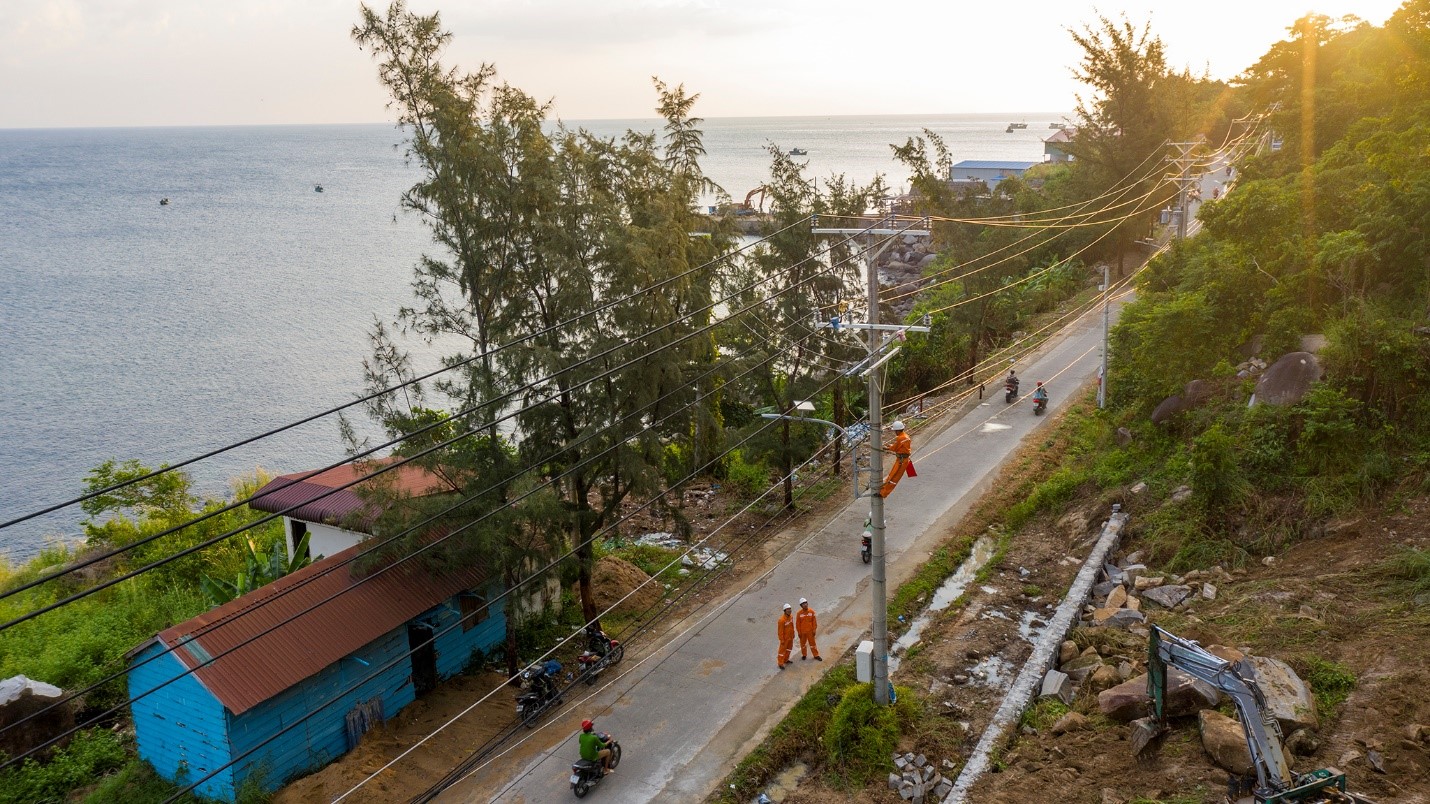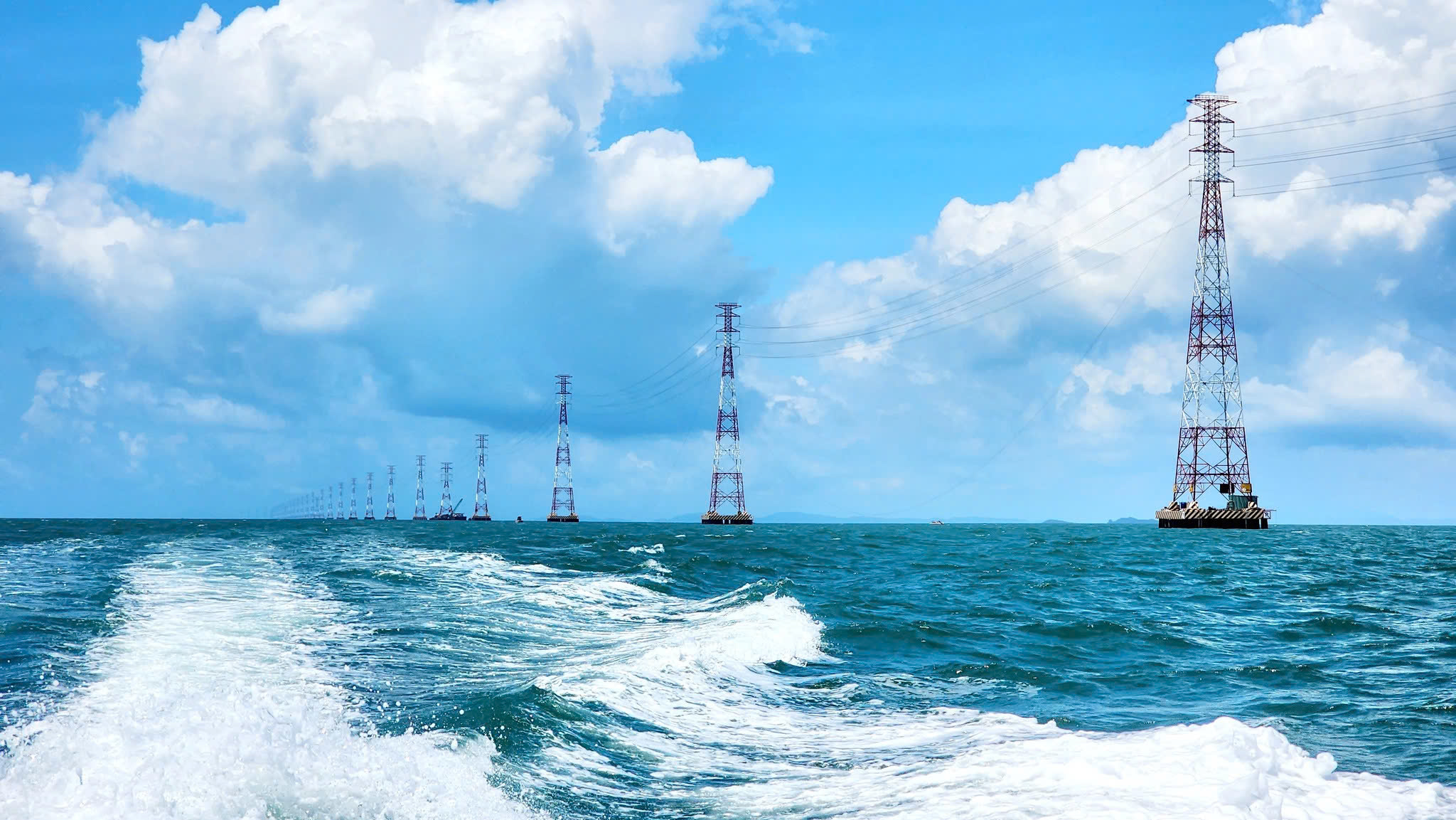Remote island awakens with new vitality
Lai Son is a relatively pristine and peaceful island in Kien Giang Province, covering an area of about 11 square kilometers. The project to connect Lai Son Island Commune to the national power grid, via a 110kV sea-crossing transmission line, was energized by EVNSPC in 2016. Since then, electric light has awakened the vitality of this southern island of the Fatherland, unlocking its tourism potential.

“Orange shirts” bring power to Lai Son island. Photo: N. Tuan
It is impossible not to mention Truong Sa – the steadfast outpost of the Fatherland in the East Sea, a strategically vital area for national defense and security. Since 2017, EVNSPC has been tasked by Vietnam Electricity (EVN) to take over and manage the entire clean energy and lighting system on the Truong Sa Archipelago, as well as provide power to the DK1 rig.
A stable power supply is a crucial factor in enhancing combat readiness and firmly protecting national sovereignty over maritime borders and islands. At the same time, with consistent and uninterrupted electricity, the lives of military personnel and residents on the islands have improved significantly, helping both soldiers and civilians feel more secure in living and working on the nation’s frontlines.

EVN and EVNSPC delegation inspects power system in Truong Sa, May 2024.
Overcoming challenges to set records
A standout project is the 110kV undersea cable line from Ha Tien to Phu Quoc - the longest undersea cable line in Southeast Asia, with a total investment of over VND 2,300 billion. The project was energized and put into operation by EVNSPC in February 2014. Thanks to this, electricity prices in Phu Quoc have aligned with those on the mainland, dropping by nearly 50% from an average of VND 5,060/kWh before connection to the national grid.
Another milestone is the first 220kV overhead transmission line across the sea in Vietnam - also the longest 220kV overseas transmission line in Southeast Asia - the Kien Binh – Phu Quoc 220kV line. The project was energized in its first phase in October 2022, boosting Phu Quoc’s power supply capacity by an additional 500MW - five times its previous consumption - and meeting the island’s power needs through 2035.

Kien Binh - Phu Quoc 220kV transmission line.
For overseas power projects, implementation is five to even ten times more difficult than on land. First and foremost, equipment transportation and construction depend heavily on tides and sea conditions. In some projects, half of the construction period faces severe challenges due to sea winds at level 5 or higher, and persistent heavy rainfall. The farther from shore, the deeper the seabed and the stronger the waves - in many areas, underwater currents also appear. Numerous tower foundations must be drilled and surveyed multiple times, with the work being extremely difficult and costly due to the complex and variable marine geology and strong ocean currents.
In addition, projects providing electricity to islands require significant capital investment. For islands powered by local sources (renewable energy), the electricity production cost is high, and the system's sustainability and stability are relatively low. Operating the island power grid is affected by saline environments and storms, which significantly shorten equipment lifespan compared to that on the mainland. Therefore, EVNSPC must continuously invest in and maintain the grid, leading to high costs for managing, operating, and repairing power systems on the islands. To fulfill their duties on remote islands, EVNSPC workers must overcome their limits, enduring long periods away from their families and units to get the job done.
To ensure island residents have access to convenient electricity services, EVNSPC has also focused on investing in advanced technology infrastructure, bringing modern power services to the islands. Today, residents of island communes can fully access Level 4 online electricity services, experience a multi-channel customer ecosystem, make cashless electricity payments, and conduct all transactions electronically.
With determination and a strong sense of responsibility, EVN and EVNSPC have been and continue to strive to keep the lights shining on the islands. The footsteps of orange-shirt workers persist through wind and waves, building more infrastructure to ensure a higher quality of power supply, driving the development of the maritime economy, and making an important contribution to safeguarding the sacred sovereignty of the nation.
Translator: Thu Hường
Share